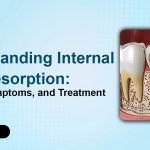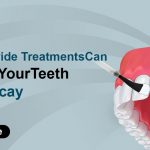When it comes to achieving a straighter smile, two popular options dominate the conversation: clear aligners and traditional braces. Both treatments are effective solutions for correcting misaligned teeth, yet they differ significantly in approach, aesthetics, and lifestyle impact. Understanding these differences can help you make the best choice for your smile.
What are Clear Aligners?
Clear aligners, like Invisalign and similar systems, are custom-made, transparent trays designed to fit snugly over your teeth. They exert a steady, gentle force to slowly shift teeth into proper alignment. These aligners are removable and need to be worn for around 20–22 hours a day for optimal results.
Benefits of Clear Aligners:
- Invisible appearance: The transparent design makes them virtually undetectable, a bonus for those seeking a discreet treatment.
- Lifestyle-friendly: You can remove the trays for eating, drinking, and brushing, allowing you to maintain your oral hygiene routine without restrictions.
- Comfort: With no metal wires or brackets, clear aligners are generally more comfortable and less likely to cause irritation to your gums or cheeks.
Less frequent dental visits: Aligners are replaced every few weeks, but visits to your dentist or orthodontist are often less frequent than with traditional braces.
Ideal for:
Mild to moderate orthodontic issues, such as minor gaps, slight overcrowding, or mildly crooked teeth.
What are Traditional Braces?
Traditional braces are made up of metal brackets that are bonded to your teeth and connected by wires, which are periodically adjusted to shift your teeth into the desired position.
Benefits of Traditional Braces:
- Effective treatment for complex cases: They are often the preferred choice for severe misalignments, bite issues, or other complicated dental concerns.
- Non-removable: Unlike aligners, braces stay in place 24/7, which means there’s no risk of forgetting to put them back on.
- Consistent results: Traditional braces don’t rely on patient compliance; the orthodontist has complete control of your treatment.
Challenges with Braces:
Braces are more noticeable than aligners and can initially cause discomfort. You’ll also need to modify your diet (avoiding sticky or hard foods) and pay extra attention to your oral hygiene to prevent plaque buildup around the brackets.
Which Option is Right for You?
Choosing between clear aligners and traditional braces depends on your unique dental needs, preferences, and lifestyle. If you’re looking for a discreet, flexible option and have mild to moderate dental alignment issues, clear aligners might be the perfect fit. On the other hand, if your case requires more extensive correction, traditional braces may be the way to go.
Take the Next Step Toward a Beautiful Smile
Should you have any doubts about which treatment suits you best, the Prime Dental Center team is ready to guide you. Schedule a consultation today, and we’ll guide you through the process of achieving your dream smile with the treatment that best suits your needs and goals.













